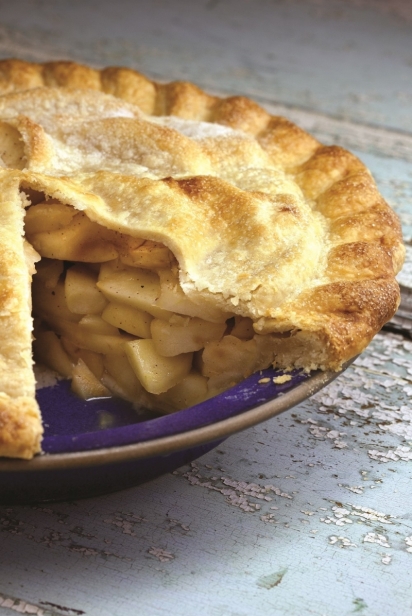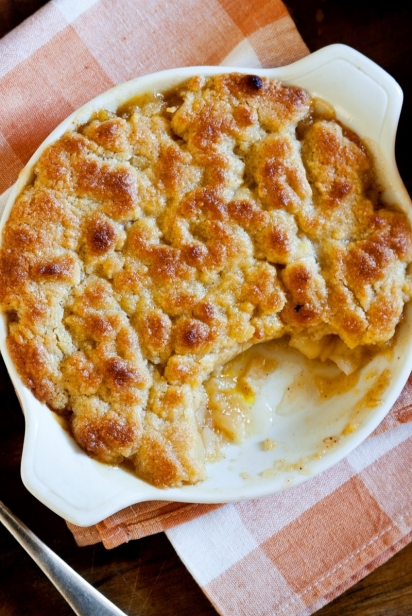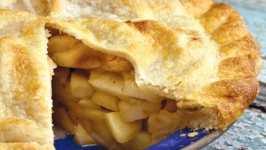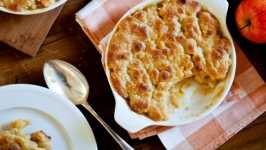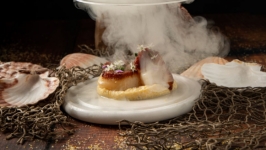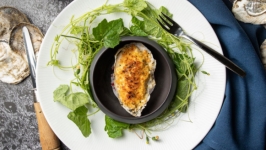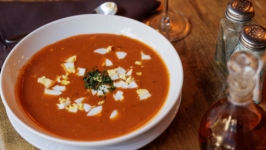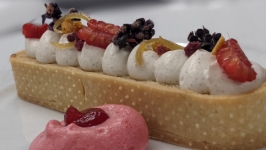How We Cook Now: The Apple Lover’s Cookbook
Nothing says “the holidays” like apples, and no dish calls to me more than apple pie. Which is why I was so excited to find the newly-released second printing of Amy Traverso’s The Apple Lover’s Cookbook.
Cookbook is a bit of an understatement. Really, it’s a compendium of all-things-apples, starting with a brief history of the apple, which was brought to the United States by the Jamestown settlers. (Its origins date back before recorded history, to the southeast corner of Kazakhstan along the Tien Shan mountain range where ancient groves still grow.)
The section “The Wild World of Apple Genetics” is a short but fascinating chapter on how apples are grown. The fruit is extremely adaptive, but you can’t just plant a seed. Instead, through pollination, trees exchange DNA with native crabapples. Providing some insight, Traverso writes that a “seedling will be even more distinct than a human child because apple genetics are mindbogglingly complex.”
The gem of the book may well be the “Apple Primer”, which sorts nearly 80 varietals into Firm-Tart, Firm-Sweet, Tender-Tart and Tender-Sweet, allowing the cook to match the best apples to each recipe. There’s even a Cheat Sheet to refer to when planning a dish.
And all that comes before more than 100 recipes personally tested by the author. While I tested two desserts, there are main dishes, sides, cider, condiments, and cocktail recipes to keep any apple lover busy.
Traverso, who is the senior food editor at Yankee Magazine as well as a host on the TV show Weekends with Yankee, has long been in love with apples. “It’s a glass half-full thing,” she said. “In a typical supermarket there’s a bin called “lemons” and another called “grapes” — usually one choice for each. But then there are the bins and bins of varietals of apples, and you have everything you need to make just about anything.”
One of the reasons Traverso updated the book was the introduction of new varietals. “They are coming faster than they used to,” she said. Gala and Pink Lady came to market back in the 1970s, but with the highly successful introduction of Honey-crisp in 1996, more apples are now being tested each year.
To be commercially successful, each new apple needs to demonstrate a “perfection of taste and performance.” Traverso calls these new apples “thoroughbreds” because they must have pronounced taste, bright acidity, a resistance to browning and can be kept for a long time. “For many farmers this is a life’s work, planting acres of trees to test and ripping out most to start again until they get consistent fruit — an effort that can take four or five years,” she said.
This book includes 11 new apples such as Opal and Cosmic Crisp, as well as 10 new recipes to reflect their use. Yet it is the heirloom apples that remain Traverso’s favorite. “They are so amazing; they have such great history and have survived for literal centuries.”
I mentioned that I live in an area without gourmet groceries, as I was concerned that I would not find the apples specified. She replied that one can “walk into almost any grocery store and find what you need. I often say that while some apples work better in certain ways, any apple pie is better than no pie!”
Taking her at her word, I went to a regional store, reference chart in hand and she was absolutely right. With nine choices there was more than I needed, and the results follow.
No matter how your family celebrates the holidays this fall and winter, consider incorporating an apple dish. Whether traditional or modern the results will be the same. Yum.
Recipes and photographs from The Apple Lover's Cookbook: Revised and Updated. Copyright 2020 by Amy Traverso. Photographs copyright 2011 by Squire Fox. Used with permission of the publisher, W. W. Norton & Company, Inc. All rights reserved.




